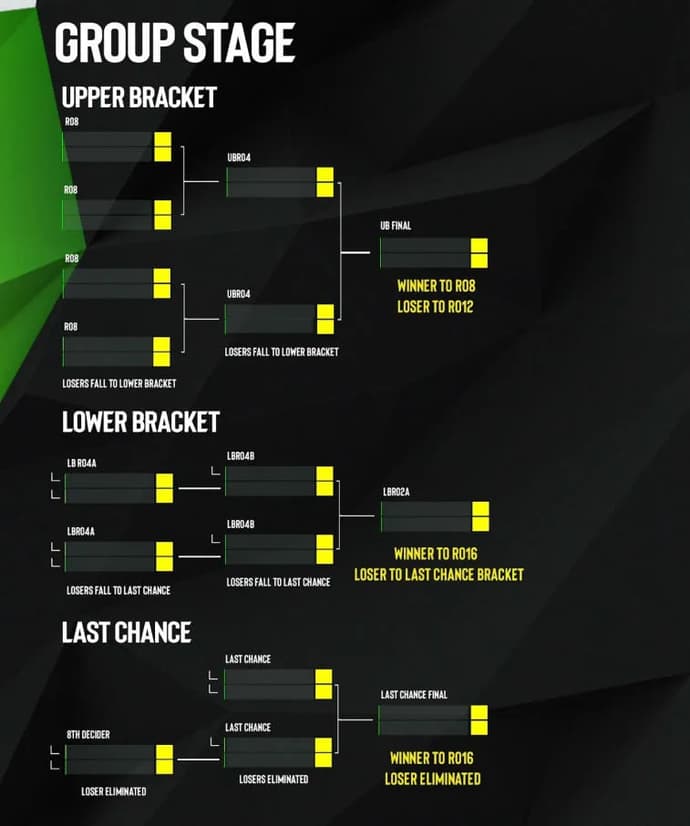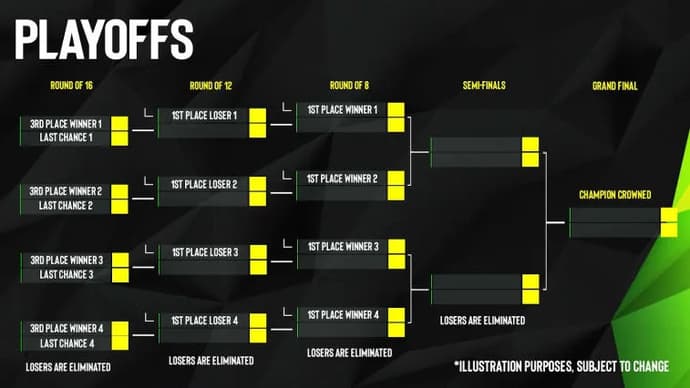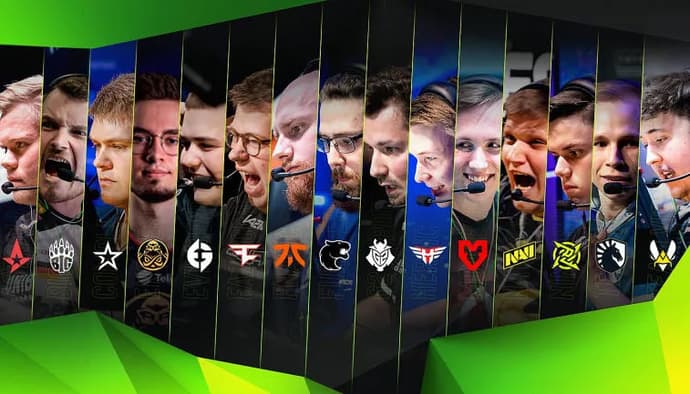
New ESL Pro League Format: Pros and Cons of Changes

The day before, on December 21, the tournament operator ESL presented an updated format for its main ESL Pro League CS:GO series. The changes are key to the development of the scene, as the organizers decided to update the structure of the series, increase the number of participants, redesign the format, and also abandon the Conference qualification stage.
However, each change carries with it both advantages and disadvantages. In this article, we would like to walk through the upcoming changes, as well as highlight the pros and cons of the updated ESL Pro League format.
What's the point: the main changes affecting the ESL Pro League
First of all, ESL expanded the number of participants in the ESL Pro League from 24 to 32 teams. At the same time, the tournament operator is reworking the structure of the series: from now on, we will move away from the usual group stage with a round robin system, and we will also see more matches in the playoffs.
Let's start with the group stage. Here 32 participants will be divided into four groups (8 teams each). But if in the previous form the group stage implied a circular format in which each participant played with each other, now the organizers have presented an updated grid. First, no more tables - teams will fight in a double elimination bracket, followed by a "Last Chance" stage.


General view of the group stage:
- Upper bracket: Eight teams start from the quarter-finals stage, from where the losers are relegated to the lower bracket. The losers of the starting matches get into the first round of the lower bracket, the losers in the 1/2 final stage - into the second round of the lower bracket. In turn, the finalists guarantee a place in the playoffs (the winner of the group goes to the quarterfinals, while the loser of the final match goes to the second round of the playoffs).
- Lower Bracket: The four losing teams in the opening matches of the Upper Bracket start their journey from the first round, from where the winners advance to the second round, and the losers fall into the "Last Chance" bracket. Then the winners play with those who have taken off from the 1/2 finals of the upper bracket for the right to reach the final. The winners of the 1/2 finals of the lower bracket play the final, the winner of which advances to the first round of the playoffs with the top seed. In turn, the loser falls into the semi-finals of the "Last Chance" bracket.
- Last Chance Bracket: Participants eliminated from the first round of the lower bracket play a drop match for 8th place in the group. The winner advances to the next round, where they play the losing lower bracket finalist. At the same time, the losing participants of the 1/2 finals of the lower bracket play among themselves for a place in the final of the "Last Chance" bracket. The winners of these matches advance to the final, where they play for a slot in the first round of the bottom seeded playoffs. In turn, the losing participants are eliminated from the championship.
- Playoffs: The winners of their respective groups will still start from the quarter-final stage, while the runners-up will advance to the second round of the playoffs. In turn, the winners of the lower bracket and the "Last Chance" stage will start from the first round of the playoffs. Here, the participants will form a familiar grid with a single exception. All matches except for the Grand Final (BO5) will be played in BO3 format.
Approving the new structure, tournament operator ESL has updated the invitation system for the ESL Pro League championships. Since the organizers are expanding the number of participants and removing the Conference qualification, a new system for replenishing the list of teams is in effect:
- Fifteen partner organizations with permanent membership in the series - Astralis, BIG, Complexity Gaming, ENCE, Evil Geniuses, FaZe Clan, fnatic, FURIA, G2 Esports, Heroic, MOUZ, Natus Vincere, Ninjas in Pajamas, Team Liquid and Team Vitality
- The top three teams based on the ESL World Rankings
- ESL Challenger Tournament Series Winners
- Four winners of European qualifiers
- Two winners of the North American qualifiers
- Two winners of the Latin American qualifiers
- Two winners of Asian qualifiers
- Two Australian qualifier winners

Thus, the organizers have approved a common system for subsequent championships, starting from the 17th season of the ESL Pro League. In light of the increase in the number of participants, the structure of the group stage has been touched upon, which ESL representatives imply will increase the number of "important" matches. However, the updated format of the series can be explained from two positions, which we propose to discuss further.
Advantages and disadvantages of the updated ESL Pro League format
What are the advantages?
First of all, the increase in the number of participants to 32 teams makes it possible for small regions to develop. We are already seeing progress in this direction, since two slots were allocated for Oceania and Asia for the upcoming ESL Pro League Season 17. For example, in the past 16th season, there were no participants from the two only the Australian team LookingForOrg played this season.
Secondly, now we will see more interesting teams from developing regions, for example, South America. If earlier it was very difficult to get into the ESL Pro League (it required winning the overall Conference or having a high position in the ESL rankings), now the organizers will hold separate qualifiers for each region. Thus, we will certainly see Imperial Esports, Fluxo, 00NATION, Nouns Esports or ATK in the case.
Thirdly, the qualification system for the ESL Pro League has become more tied to real time. For example, the Movistar Riders team, which won the ESL Challenger Valencia last summer, managed to qualify for ESL Pro League Season 17. However, now the Spanish team is a pale shadow of itself. In light of the latest changes, invites will be issued based on wins in the most recently played ESL Challenger tournaments (the next ones are Melbourne and Hannover).
Fourthly, the organizers have redesigned the group stage format to reduce the number of "passing" matches. Whereas before, closer to the fourth round, the teams decided their tournament prospects, now they will not have a motive to relax until they secure a place in the playoffs in the fight at every stage.
Flaws
Any qualifying system carries certain risks. Looking at the example of the 16th season of the ESL Pro League, we saw the Portuguese team FTW at the group stage of the championship. But if the team won the Conference in the summer, then a month later they sold their strongest players and suffered five defeats in the group stage of the ESL Pro League.
Thus, there is always a risk of seeing weak teams that get places by a momentary take-off in qualifications. As a result, we again run the risk of getting obvious outsiders who will suffer defeat after defeat and seem like easy prey for the stumbled "grands".
In general, the next changes should benefit the competitive ecosystem and the development of the ESL Pro League in particular. If earlier we really watched a large number of matches without a tournament background, now, with the update of the group stage format, the viewer's interest will increase with each match. Moreover, the development of small regions can give the necessary impetus to the emergence of new teams that have been undeservedly left out. However, it is possible that ESL will review and make adjustments to the format; but what is already there cannot but please the fans.
CS:GO's unique blend of strategy and teamwork has made it a mainstay in the world of esports, with a competitive scene that continues to thrive. Simultaneously, the game has fostered a robust virtual economy, thanks in large part to CSGO trading sites. These platforms serve as the virtual marketplaces where players can engage in item transactions, turning their in-game inventories into valuable assets. In the ever-evolving landscape of CS:GO, CSGO trading sites are essential hubs for enthusiasts looking to stay ahead in the game and showcase their individuality through unique in-game items.

Elen Stelmakh is a creative individual dedicated to advancing gaming culture through articles and visual design. As a full-time EGamersWorld author and designer for a gaming website, Elen not only creates content but also infuses it with energy and creativity.
 Mystbloom 2.0 Bundle Details: All Skins List, Price, Release Date, In-Game LookMystbloom 2.0 continues the floral / “bloom” theme, keeping the petal-like shapes and seasonal colour palette that defined the first collection.
Mystbloom 2.0 Bundle Details: All Skins List, Price, Release Date, In-Game LookMystbloom 2.0 continues the floral / “bloom” theme, keeping the petal-like shapes and seasonal colour palette that defined the first collection. Dota 2 DreamLeague Season 27 OverviewDiscover everything about DreamLeague Season 27: schedule, format, participating teams, and the $1,000,000 prize pool.
Dota 2 DreamLeague Season 27 OverviewDiscover everything about DreamLeague Season 27: schedule, format, participating teams, and the $1,000,000 prize pool. When Does the New ARC Raiders Season Come Out?Cold Snap brings winter maps, new enemies, and a refreshed Raider Deck to ARC Raiders this December.
When Does the New ARC Raiders Season Come Out?Cold Snap brings winter maps, new enemies, and a refreshed Raider Deck to ARC Raiders this December. Dreglord: Nightreign New Boss GuideDreglord stands as Nightreign’s most punishing foe, demanding precise movement, controlled aggression, and a build tuned for pressure under chaotic conditions.
Dreglord: Nightreign New Boss GuideDreglord stands as Nightreign’s most punishing foe, demanding precise movement, controlled aggression, and a build tuned for pressure under chaotic conditions.



